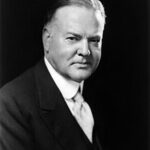The Associative State Vision
President Herbert Hoover championed voluntary cooperation in business as Commerce Secretary and President. His approach promoted collaboration between government, industry, and labor through trade associations. This method avoided direct federal intervention while encouraging economic progress. 📊
Implementation Through Trade Associations
Hoover organized industry conferences bringing together business leaders and government officials. These gatherings established standardized practices and efficiency measures across sectors. The approach fostered voluntary cooperation in business relationships rather than mandated compliance. Companies adopted uniform standards for products, reducing waste and improving quality.
Technological and Industrial Advancement
This policy framework accelerated industrial modernization during the 1920s. Trade associations shared research and development costs among member companies. 💰 The collaborative approach reduced duplication of efforts while promoting innovation. Industries standardized components, making mass production more efficient and cost-effective.
Impact:
Economic Modernization Success
Voluntary cooperation in business produced significant economic benefits during the 1920s boom. Industrial productivity increased as companies adopted standardized practices and shared technologies. The policy encouraged efficient resource allocation without government coercion. Trade associations facilitated information sharing, reducing market uncertainties and production costs. 📊
Foundation for Future Policies
Hoover’s associative approach influenced later New Deal programs and modern public-private partnerships. The concept of voluntary cooperation in business became a template for industry-government collaboration. This framework demonstrated how coordination could achieve public goals while preserving private enterprise. Many historians praise this balanced approach to economic governance.
Long-term Industrial Benefits
The policy established lasting industrial standards that survived the Great Depression. 🌍 Trade associations continued promoting efficiency and innovation throughout the 20th century. This collaborative model influenced post-World War II economic planning and international trade practices. The emphasis on voluntary cooperation rather than regulation created sustainable business relationships.
